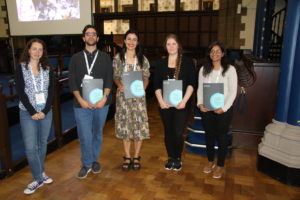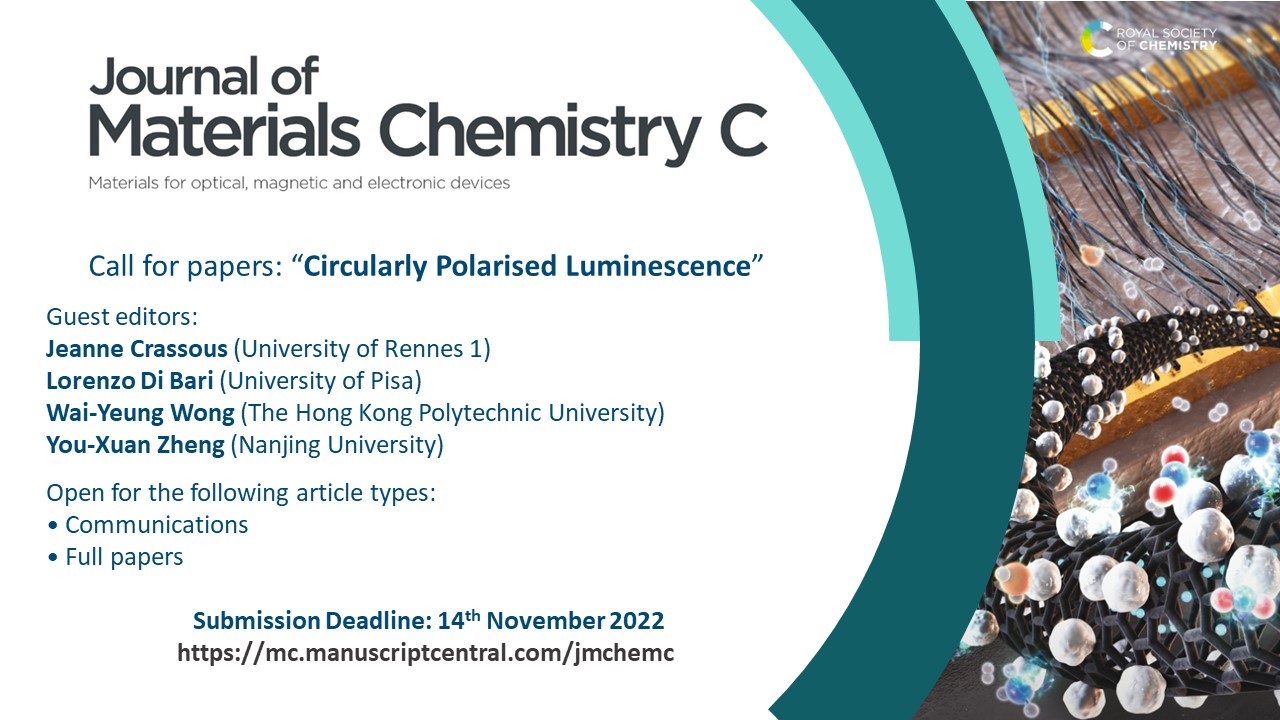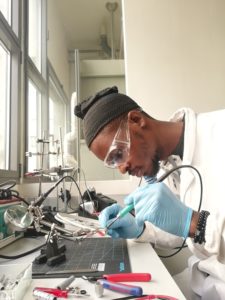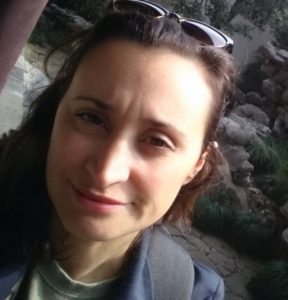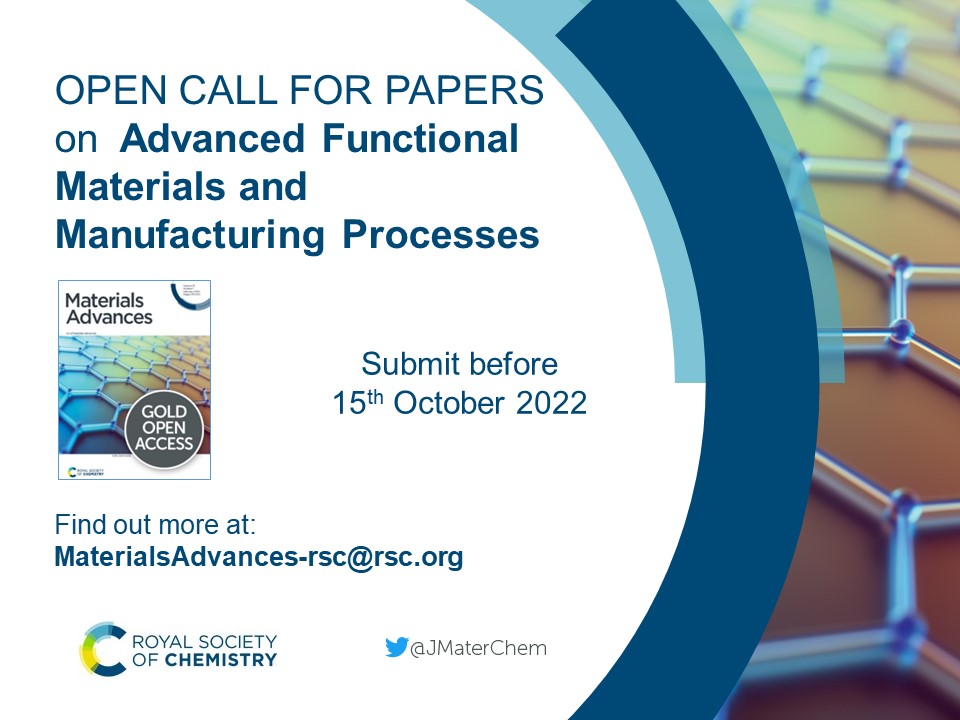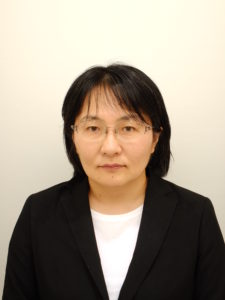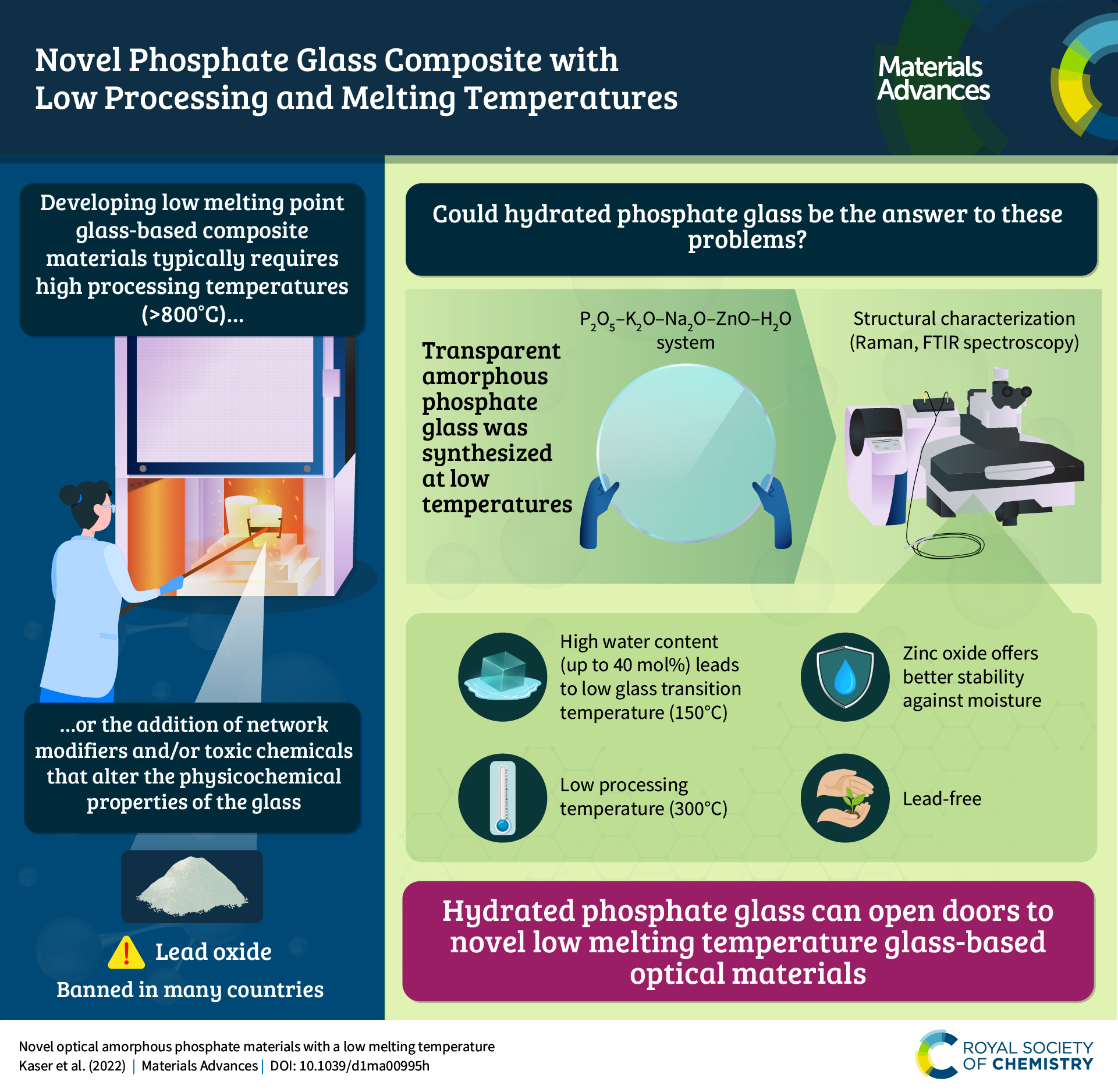Journal of Materials Chemistry C and Materials Advances are delighted to welcome Professor Hao-Li Zhang from the University of Lanzhou to the Editorial Boards as a new Associate Editor.
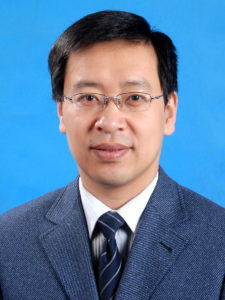
Professor Hao-Li Zhang received his BSc and PhD from Lanzhou University in 1994 and 1999, respectively. After his postdoctoral work at University of Leeds in 1999 with Professor Stephen D. Evans, he worked at the University of Oxford in 2002 as a research associate with Professors Andrew Briggs and David Bucknall. In 2004, he joined the State Key Laboratory of Applied Organic Chemistry (SKLAOC) at Lanzhou University as a professor of chemistry. His research mainly focuses on the development of new organic functional materials for electronic and optoelectronic applications, including transistors, single-molecule devices and nonlinear optics. He was the recipient of several prizes and awards, including Asian Rising Stars by Asian Chemical Congress and Distinguished Young Scholar by NSFC. He is a Fellow of the Royal Society of Chemistry.
‘I am really delighted to have been appointed as a new Associate Editor of Journal of Materials Chemistry C and Materials Advances. Since my early career, I have witnessed the rapid development of materials chemistry as a highly interdisciplinary science that provides materials foundation to various new technologies. In my research, I am devoted to combine expertise in synthetic organic chemistry and physical chemistry to produce novel functional organic materials and to realize new applications in electronic, optical and nanoscale devices. I endeavor to work with the editorial team to promote creative and interdisciplinary researches in materials chemistry.’
Check out some of Hao-Li’s recent publications in RSC journals:
Solid additives in organic solar cells: progress and perspectives
Yi-Fan Ma, Yamin Zhang and Hao-Li Zhang
J. Mater. Chem. C, 2022, 10, 2364-2374, DOI: 10.1039/D1TC04224F
Nonvolatile organic field-effect transistor memory from pyrene-fused azaindacene regioisomers
Duan-Wu Liu, Yamin Zhang, Xiang-Yang Li, Qi Xiao, Wen-Jing Sun, Xiangfeng Shao and Hao-Li Zhang
J. Mater. Chem. C, 2021, 9, 6560-6567, DOI: 10.1039/D1TC00560J
Carbon nano-onion encapsulated cobalt nanoparticles for oxygen reduction and lithium-ion batteries
Ming-Jun Xiao, Ze-Qi Zhang, Qi Xiao, Xiang-Yang Li, Zheng-Tao Zhang, Qiang Wang, Yong Peng and Hao-Li Zhang
J. Mater. Chem. A, 2021, 9, 7227-7237, DOI: 10.1039/D0TA12504K
Unveiling the dimension-dependence of femtosecond nonlinear optical properties of tellurium nanostructures
Qi Xiao, Bo Ma, Xian Fei, Duan-Wu Liu, Xin-Ping Zhai, Xiang-Yang Li, Ming-Jun Xiao, Yong Peng, Qiang Wang and Hao-Li Zhang
Nanoscale Horiz., 2021, 6, 918-927, DOI: 10.1039/D1NH00253H
Read our interview with Hao-Li below:
1. What attracted you to pursue a career in materials science and how did you get to where you are now?
It is interesting to look back to see how my interest in physics and organic chemistry eventually led me to a career in materials science. I was very much fond of both physics and chemistry in high school, and have ever won several prizes in a few tournaments, which got me admitted by Lanzhou University without taking the national college entrance examination. I happily selected the Department of Chemistry to study organic chemistry, which is one of the best major in Lanzhou University. When I entered PhD period, my project was about fabrication of “intelligent interface” based on Self-assembled Monolayers. This project seemed to be a perfect venue to fulfil my desires in both organic chemistry and physics, where I synthesized various photochromic organic molecules, and then employed different physical measurement technologies to study their optical and electronic properties on surface. I soon realized that my knowledge in physics is insufficient to support advance research in such highly interdisciplinary field. I then went to Department of Physics and Astronomy at Leeds University for my first postdoc, and had a very enjoyable experience working along with a group of physicists led by Prof. Stephen D. Evans. Later, I joined the Department of Materials at Oxford University as a research associate, working with Prof. Andrew Briggs and Prof. David Bucknall. In Oxford, I collaborated with many excellent material scientists and I learned that materials science is a rapid developing, exciting and highly interdisciplinary science that provides materials foundation to various new technologies. In 2004, I moved back to China to start my independent career in the State Key Laboratory of Applied Organic Chemistry at Lanzhou University. My research group is trying to combine expertise in synthetic organic chemistry and physical chemistry to produce novel functional organic materials and to realize new applications in electronic, optical and nanoscale devices.
2. Why did you choose to specialize in your specific research field?
In my graduate study time, I was very much interested in organic synthesis. I felt that the creation of organic molecules with predesigned physical properties is like a work of art. In 2000, when I just finished my PhD, three researchers were awarded Nobel Prize in Chemistry for their research in conducting polymer, which draw my attention to the research in organic semiconductor. I found organic semiconductor is a very promising field to work on, as it offers great application potentials in a broad field. I also like the challenge of design organic molecules with desirable electronic or optical properties and then go to laboratory and synthesize them. It is fascinating that installing or removing a tiny functional group might dramatically change the electronic properties of an organic molecule, even converting an insulator into a good semiconductor. In my group, we have been able to create many series of new organic semiconductors for different applications, like transistors, solar cells and lasers. Though it is very challenging, I found the research in creating new and advanced organic semiconductor is very exciting and rewarding.
3. What do you see as the biggest challenges facing researchers who work in your field?
There are many challenges in organic semiconductor research, but I think the biggest one is how to bridge the gap between molecules and materials. Now days, chemists can readily design various organic molecules and predict their properties, like absorption, emission and electronic affinity etc. However, these predictions are reliable only at molecular level. For optoelectronic devices, we need to know the properties of molecules in solid state, there are still a lack of suitable tools to deal with this problem. This is mainly because organic molecules are packed together using weak intermolecular interactions, and there are vast possibilities that these molecules may pack together in solid state, which is known as polymorphism. At the moment, we still cannot confidently predict the crystal structure from a molecular formula, so that it is difficult tell from a molecular structure that whether it can become a good material. I believe that with the rapid growing of organic semiconductor library, and the fast development of artificial intelligent (AI), AI-assisted material design or screening may offer a new and efficient way to overcome this challenge.
4. What excites you most about your area of research and what has been the most exciting moment of your career so far?
As a material chemist specializing in organic synthesis, I am particularly excited each time when we made discovery on new organic framework that exhibiting good semiconducting properties. A few years ago, our group discovered a new family of n-type organic semiconductor based on pyrene diimide (PyDI) framework. We demonstrated that PyDI offer many attractive features, including excellent electron mobility, stability and two photon excited fluorescence. We have constructed a series of organic devices based on PyDI derivatives, ranging from OFET, OPV to memory devices, and achieved excellent device performance. I can still recall the excitement when we made this molecule from a design on paper.
5. Which of your JMC publications are you most proud of and why?
I am proud of every paper I published in JMC. I’d like to just pick two as examples. I am interested in the fundamental issues related to organic devices, and one of such issue is how to control the carrier transport properties in organic field effect transistors (OFETs). In our publication “Tuning the ambipolar charge transport properties of N-heteropentacenes by their frontier molecular orbital energy levels” (J. Mater. Chem. C, 2015, 3, 4188–4196), we revealed how to control the ratio of electron and hole mobilities in ambipolar OFETs. Besides, in our latest publication (J. Mater. Chem. C, 2022, 10, 8666–8673), we provides a strategy to precisely tune the crystalline structures between 1D lamellar and 2D crossed motifs, which helps to improve the hole mobility and device stability. These results provide useful guidelines to the design of organic semiconductors for stable and high performance OFETs.
6. Why do you feel that researchers should choose to publish their work in Journal of Materials Chemistry C and Materials Advances?
When I discuss with my students about which journal to publish our research, I always emphasize two most important factors: scope and recognition. The Journal of Materials Chemistry family has a history of more than thirty years for publishing high quality research work on materials chemistry. They are well recognized by the materials research community, and have attracted a broad range of readers from interdisciplinary communities. With the rapid growing of submission, the Journal of Materials Chemistry family has been divided into several sister journals, in which Journal of Materials Chemistry C mainly covers the materials for optical, magnetic and electronic devices, while Materials Advances publishes interdisciplinary researches through open access. Therefore, if one’s research meets the above scopes, and would like to share the results in one of the most recognized materials chemistry journals, I would definitely recommend Journal of Materials Chemistry C and Materials Advances.
7. What attracted you to join the Editorial Boards of Journal of Materials Chemistry C and Materials Advances?
I have been reading Journal of Materials Chemistry since I was studying chemistry in the university. I have long been a fan of this journal as it was one of the few early leading journals focusing on materials chemistry. I can still recall the excitement when my articles were highlighted by the editor or published as cover articles. With more publications on the JMC family journals and serving as advisory board member of other RSC journals, I started to have more interaction with the editorial team and found them professional and friendly. Therefore, I had no hesitation to accept the invitation to join the Editorial Boards of Journal of Materials Chemistry C and Materials Advances.
8. What career would you have chosen if you had not taken this career path?
I think a role in higher education management could be another career path I’d like to take. Besides Professor in Chemistry, I am also serving as the executive direction of Graduate School of our University. I enjoy teaching very much because it gives me chance to interact with many young, curious and talent students. I also realize that our graduate education system needs constant update and reform in response to the impact of the Knowledge Explosion and to meet the ever growing new requirements from the society.
9. Why should young people study chemistry or related subjects?
I could not emphasize too much about the importance of chemistry. As one of the oldest and most fundamental subject of science, Chemistry is often referred to as the central science because it joins together physics and mathematics, biology and material sciences. Studying chemistry provides an excellent basis for understanding the world we live in. Meanwhile, Chemistry provides nearly everything we need for our daily life, from food, clothing, and energy to materials. Therefore, I believe Chemistry knowledge is essential for young people who want a career in science, engineering or education.
10. What impact do you feel that your area of research can make over the next 10 years?
I believe that optoelectronic based on organic materials is at the very edge of booming. Commercialization of OLED alone has made novel devices, like large area, high brightness, low energy consumption and flexible display, into reality. Market research companies have forecasted that the share of organic optoelectronics will increase dramatically in the coming decade. It is reasonable to believe that other organic devices, for instance, organic photovoltaic and organic transistors will enter the commercialization tracks within the next 10 years. If all these forecasts come to true, we shall be a very fortunate generation to enjoy a wave of new organic optoelectronic devices coming to our daily life.
Submit your best work to Hao-Li and our team of Associate Editors on Journal of Materials Chemistry C and Materials Advances now! Check out our author guidelines for information on our article types or find out more about the advantages of publishing in a Royal Society of Chemistry journal.
Keep up to date with our latest articles, reviews, collections & more by following us on Twitter, Facebook or by signing up to our E-Alerts.
Comments Off on Journal of Materials Chemistry C and Materials Advances welcome Professor Hao-Li Zhang to our Editorial Boards


